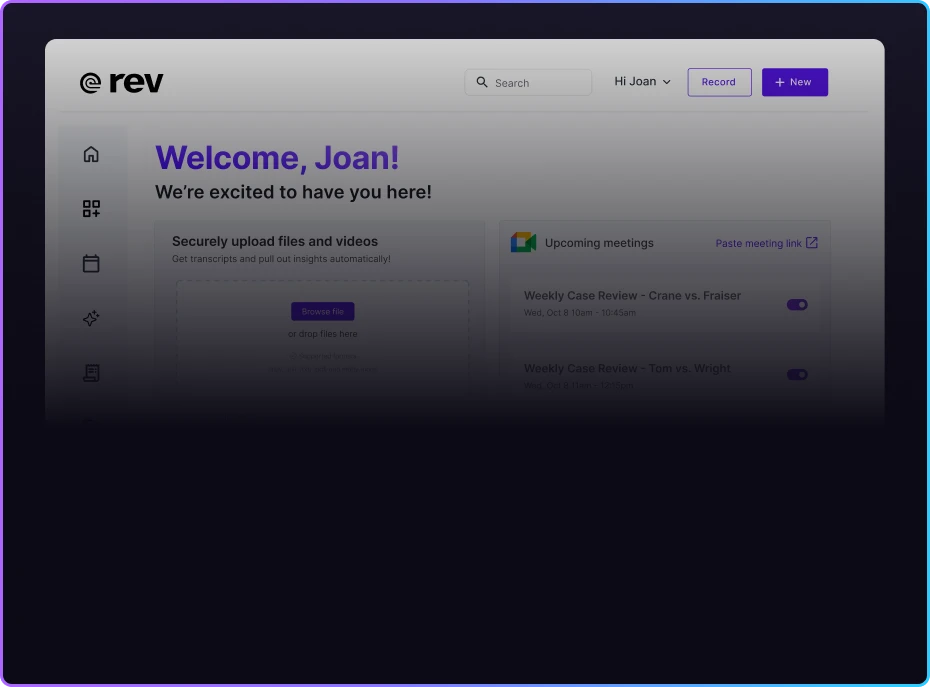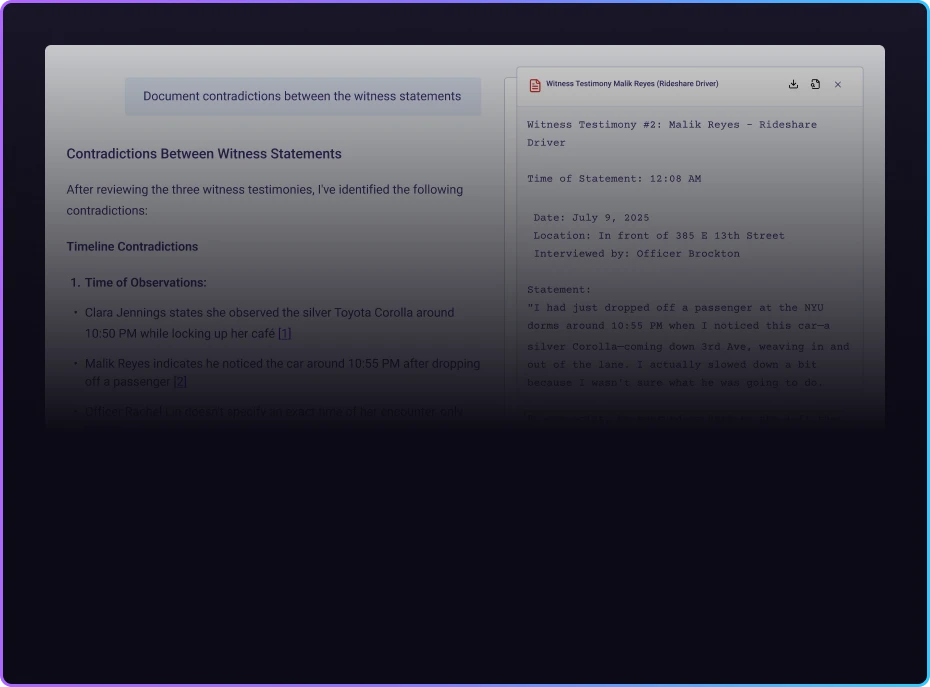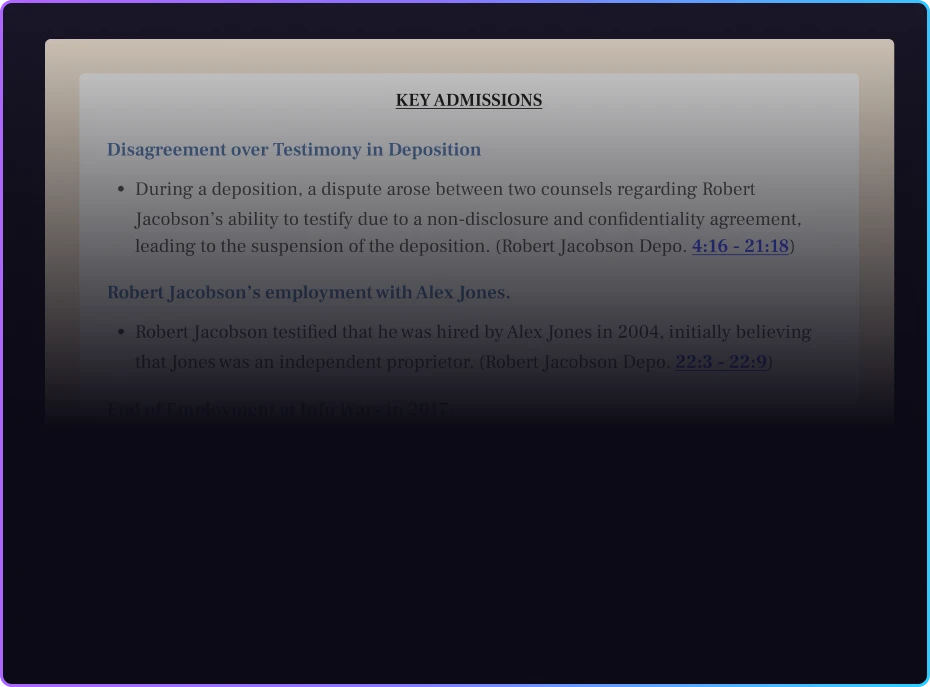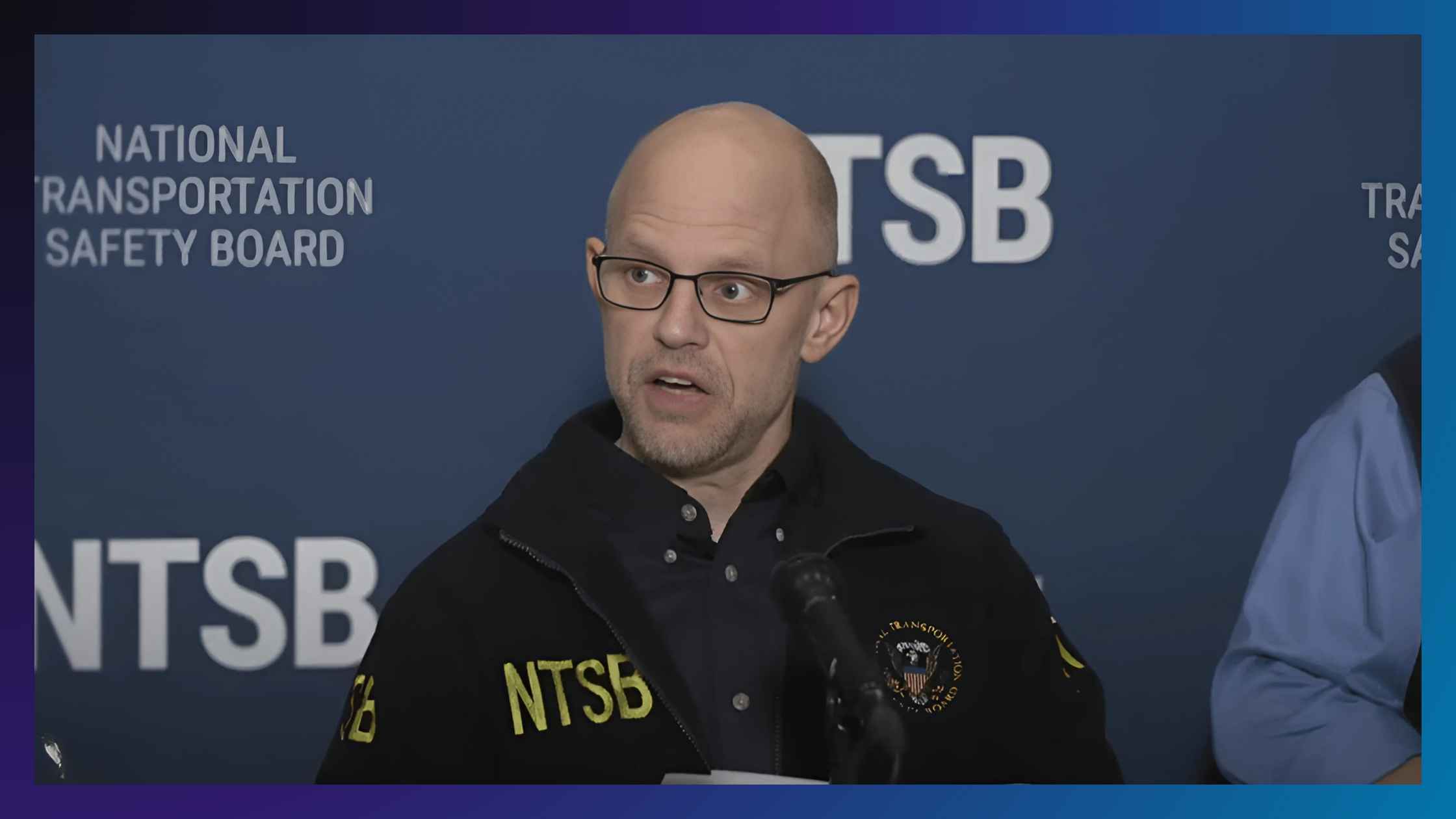Speaker 1 (00:00):
Banning. B-A-N-N-I-N-G. Thank you.
Mr. Inman (00:03):
Investigator in charge?
Speaker 1 (00:04):
Investigator in charge. Thank you.
Mr. Inman (00:13):
Let me just start with what we began our first press conference, I guess two or three days ago, we gave the condolences to the 67 families of the 67 victims in this accident, and tonight we also need to give the condolences to yet another set of individuals due to the Philadelphia crash. Our hearts go out to all of them. Nobody should suffer this much tragedy no matter what timeframe in between it, but know this, we will find out what happened in both of those accidents. We'll make recommendations and we will attempt to never have to deal with those type of accidents again.
(00:56)
I want to give you just a couple of facts right off the bat just in case there's any questions. Last year, the NTSB investigated across almost 1,288 different events. Aviation accounted for 1,204 of those. We currently have open 1,145 investigations in aviation. Last year we had multiple accidents with six or more fatalities. Across all of our modes, which are primarily aviation, we dealt with 343 fatalities. We currently have open 1100 recommendations and in aviation there are 283 that are still pending. The team that is working on this crash at DCA collectively has over 350 years of tenuity with the NTSB. We will find out what happened and we'll do everything we can to prevent it, but I don't want anyone to think because we are working two accidents, this is what we do week in and week out. Just today, a lot more people are paying attention to it.
(02:15)
We're taking an opportunity to introduce Bryce Banning. He hasn't really spoken the last couple of times, but he's been working hard and putting together a lot of information. Bryce joined the NTSB in 2012 as a senior aircraft investigator. He's been the investigator in charge on hundreds of aircraft investigations. He's an airline transport pilot with commercial privileges for single engine land and sea, certified flight instructor, multi-engine instructor and instrument instructor. He's also a certified airframe and power plant mechanic. Bryce has accumulated over 8,000 hours of flight time in all types of aircraft, ranging from Pipers to Navajos, King Airs and Lear. He's served in multiple management positions for multiple airlines, and he has been leading this team since the inception. He's going to brief you on some details that we have and then we'll come back with some additional details.
Bryce Banning (03:17):
Thank you. The flight data recorder and the cockpit voice recorder from the PSA aircraft were recovered on Thursday in the late afternoon by the FBI dive team. The CVR and the FDR were provided to engineers at the NTSB vehicle recorders division immediately after recovery. Both the FDR and the CVR were a L3Harris Communications FA 2100 type. Both recorders are solid state memory digital recorders. Both the CVR and the FDR were downloaded successfully. The FDR contains about 400 parameters and is currently being analyzed by a FDR working group consisting of the NTSB, FAA and PSA.
(04:20)
The CVR contained about two hours and four minutes of good quality audio. ADS- B and FDR time were correlated. Timing will continue to be refined. Times are in Eastern Standard Time and are preliminary. The FDR captures the entirety of the accident flight. The CVR audio, because it is only two hours in duration, starts mid-flight.
(04:56)
Prior to initial descent, the crew briefed the arrival for the Troops Five arrival, followed by an ILS approach to runway one at DCA. Around 8:15, the aircraft left 37,000 feet for an initial descent. At 8:39:10 Potomac approach cleared the crew for the Mount Vernon visual runway one approach. At 8:43:06, the crew made initial contact with the DCA Tower. The tower controller then asked if the crew could switch to runway 33. After a brief discussion between the crew, they agreed to runway 33. At 8:45:27 the autopilot was disconnected. At 8:46:01 a radio transmission from the tower was audible informing PAT-25 that traffic just south of the Wilson Bridge was a CRJ at 1,200 feet, circling to runway 33. At 8:46:29, the crew received a 1000-foot automated call out. At 8:46:47 DCA Tower cleared other jet traffic on runway one for departure with no delay.
(06:42)
At 8:47:29, the crew received a 500-foot automated call out. At 8:47:39 a radio transmission from the tower was audible asking PAT-25 if the CRJ was in sight. One second later, the crew received an automated traffic advisory stating "Traffic traffic." At 8:47:42. A radio transmission from the tower was audible, directing PAT-25 to pass behind the CRJ. At 8:47:58 the crew had a verbal reaction and FDR data showed the airplane beginning to increase its pitch. Sounds of impact were audible about one second later followed by the end of the recording,
(07:48)
A CVR group consisting of party representatives from the NTSB, PSA, ALPA, and the FAA has been convened. The group is currently working to transcribe the entirety of the CVR recording, verbatim. Thank you.
Mr. Inman (08:14):
We'll take some questions at the end, but we have some additional details we definitely want to brief you on today. I want to clarify something that was, I think, presented by NTSB in some form, specifically around air traffic control. The Washington DCA Tower was communicating out any transmission on a VHF and UHF frequency. Any transmission would come out on both bands. The Black Hawk was transmitting out with a UHF band while the CRJ jet was transmitting out with a VHF. To put that in context, both the airplane and the helicopter would hear any air traffic control,
Mr. Inman (09:00):
But they would not hear the other aircraft or helicopter conversely, if they were transmitting out. I bring that up because we are now working through the transcript of the air traffic control and many people have heard online different recordings. Those do not contain the UHF radio transmissions. What they're hearing is the VHF recorded on certain software programs. As we synchronize the timing on that, we hope to be able to release it tomorrow. We do have it. We're working through the synchronization because the specific time will be very critical.
(09:42)
A few updates in regard to the Black Hawk helicopter. We can verify it was on a training flight that would utilize night vision goggles. We do not know at this time if the night vision goggles were actively being worn nor what the setting may be. Further investigation should be able to let us know if that occurred and what factor it may play in the overall accident.
(10:12)
We announced the combination CVR and the flight data recorder was extracted last night from the aircraft. When it was brought to our lab and opened, there was a water intrusion. Again, this is not uncommon. If you recall in the CRJ, that cockpit voice recorder also had a water intrusion. It is going through the same process of ice water until it's put into a vacuum oven. We still are very confident we will have that data.
(10:47)
On the Black Hawk, we can confirm that we are looking into a priority air transport, and that's where you hear PAT, that on the prior day PAT-11 was in close contact with a Republic Air flight. The Republic Air flight rejected the landing and did a go-around. The reason we are bringing this up is our data currently shows there was over 1,000 feet of separation between those two aircraft. 1,000 feet is a good safety barrier. Obviously, the pilot made its own decision in rejecting the landing. We just wanted to bring that fact out. It will be considered in the overall evaluation of this accident.
(11:38)
So now let's go into controllers. At the time of the accident, there were five controllers in the air traffic control tower cab at DCA. One was a local controller which was handling not only helicopter but fixed-wing aircraft. And the local controller also would be handling arrivals and departures, close-in airspace, and the use of the runway. There was a ground controller, which was handling all aircraft and vehicles not on the runway. In addition, there was a local assist controller. This person is responsible for assisting the local controller in any type of actions that are needed, reviewing data, scanning the field, a multitude of different things. You will not hear the assistant controller on any of the ATC's tapes, but we can confirm that person was in the cab. In addition, there's an operation supervisor who has direct oversight over the tower. This is someone who manages everyone that's involved in the operation along with an operational supervisor in training. That leads us to confirm there were five people in the tower at the time of the accident.
(13:09)
At this time, we have interviewed the local controller, the ground controller, and the local assist controller. We anticipate having the interviews with the operations supervisor and the supervisor in training conducted no later than Monday evening. And for a little bit of context, this is a controller's worst nightmare. It hits everyone that works in that cab and knows them very hard. These interviews take a long time, not because there's that much talking, but there's several breaks that occur for emotions, just to be able to compose themselves to talk about what happened. We want to be thorough. If we need to go back for additional information, we absolutely will. We're getting full cooperation and access to those individuals we need, and we hope again to have them completed no later than Monday.
(14:09)
Now we're going to talk a little bit about altitude, and I'm going to preface this and we're going to try to work through your questions, but I want to be very clear. Our team has had some internal debate on releasing one part of this, and whenever I explain it, I hope you'll understand why. When we received the recorders from the CRJ, we were able to define an altitude of where it was very close to the time of impact. That is a data point we feel very comfortable with.
(14:44)
We also have an initial set of information in regard to what was being seen on the cab in the control tower. We have not finalized that and need to get more granularity to it, and we currently don't have the readout from the Black Hawk. I put all that into context for you in that whenever I give you some altitude information, one part of three pieces we have defined. Another part we feel fairly confident but need to get more information and a third we don't even have. Currently, the CRJ, based upon the data recorder, at the time of impact was at 325 feet, plus or minus 25 feet. This is from the belly of the CRJ. The CRJ itself is 20 feet and eight inches from the wheel to the top of the tail. So from the belly, the CRJ at time of impact was 325, less or minus 25 degrees. And for those who follow this closely, that is a corrected altitude. It is based on the ADS-B data and the flight data recorder.
(16:08)
Our preliminary review of what the tower cab was showing on the data screen that would've been in front of the controllers was 200 feet near the time of the accident. Again, this data is preliminary. Tomorrow, we feel very comfortable that we'll be getting the additional data sources that will confirm precisely what it would've been on the screen at the time. And I would also caution you there's typically in the cab on that screen, it may be a four to five second refresh rate, but obviously this is something that we're going to be looking at very closely.
(16:49)
The third prong of that is the helicopter recorders. Between those three, whenever we have those data points finalized, we feel that we'll be very comfortable in saying exactly what altitude this occurred at, and I know that's been a lot of speculation. You may have a few questions on it. But I want to caution, we're trying to give you what information we have and we've verified at that time.
(17:19)
With that, we'll take some questions. Just one second. Ma'am.
Speaker 2 (17:29):
Claudia from [inaudible 00:17:31]. You said that the altitude and the recorder recorded the altitude of the CRJ. Was it trying to pull up before the collision? Was that what you were saying?
Mr. Inman (17:41):
The question was the altitude that was read from the ADS-B and the voice recorder was trying to pull up? I can tell you at one point very close to the impact, there was a slight change in pitch, an increase in pitch. That is something that
Mr. Inman (18:00):
We will get you more detail on, but it was an indication of an increase in pitch.
Todd Grady (18:06):
Thank you. Todd Grady, for [inaudible 00:18:08] Fox. So are you also saying that there was a 100 foot discrepancy between what the air traffic controller was seeing on the screen in front of them and what the height, the altitude of the plane? There was 100 feet difference?
Mr. Inman (18:24):
So the question is, was there 100 feet difference between what we found the plane to be operating at and the air traffic control tower?
(18:32)
I'm saying the initial data we have on the control tower cab says 200 feet would've been visualized. This is a fairly good estimate, but it needs to be finalized. I shouldn't say estimate. It's a fairly good initial read. It needs to be finalized. And again, the CRJ was operating at 325 feet, plus or minus 25.
Todd Grady (18:58):
And how common is it that the two aircraft would be operating on different frequencies with the same control tower?
Mr. Inman (19:04):
The question is, how common would it be that the two aircraft would be operating on separate frequencies? It is completely common. The military operates on one frequency, civilian on another. We're just trying to clarify that because you are only reading or hearing some things online, so we're trying to get out and dispel some myths. Yes, sir.
Dave Leval (19:24):
Mr. Inman, Dave Leval with DC News. Now at this point, you've given us the CRJ, but can you speculate on the altitude of the PAT at this point?
Mr. Inman (19:37):
We cannot speculate. The question is, can we give any information on the altitude of the PAT? We cannot at this point. Obviously an impact occurred and I would say when an impact occurs, that is typically where the altitude of both aircraft were at the moment. But again, whenever we have the data from the recorder, we'll be able to give you more specifics.
Dave Leval (20:03):
And just to follow up, if I may, sir? There have been reports, can you comment on reports that PAT may have flown above its max limit for that airspace?
Mr. Inman (20:15):
So the question was, can I comment on reports that PAT may have flown above its max limits? No, because I haven't heard that. I don't try to look at the media that much. So by not saying that I'm not denying, but I just haven't heard it. We haven't discussed it. I'll ask the investigator in charge. Do you have any information on that?
Bryce Banning (20:37):
Yeah, I can provide just a little bit of context. The PAT-25 was within the lateral boundaries of a helicopter route. The ceiling of that route was 200 feet. As Member Inman said, we have not got the data out of the FDR for the Blackhawk at this time, but that's what we know.
Mr. Inman (21:02):
Okay. We're going to go down here.
David Kaplan (21:07):
David Kaplan with Fox 5 here in D.C. You mentioned as you walked through the timeline that there was a broadcast over the cockpit of, "Traffic, traffic, traffic." Can you talk about what indications, if any you have that the plane's anti-collision system was working?
(21:25)
It's my understanding that that broadcast goes out if the system has been activated. Can you comment on what you've learned about the anti-collision system?
Mr. Inman (21:33):
The question is about the, "Traffic, traffic, traffic," that was heard on the cockpit for support. I can say this, we are defining what is inside of each system and what was their outputting.
(21:45)
Because of the unique nature of military aircraft we need additional specialization, which we have, but for right now, we're trying to present you with what we've heard. So we need further information to be able to find why it was indicating, "Traffic, traffic, traffic." Yes.
Speaker 3 (22:00):
The night goggles. How will you determine if they were wearing the night goggles or not?
Mr. Inman (22:06):
The question was, how will we determine if they were wearing the night vision goggles or not? Part of that will be based and we already know during the extraction of the bodies how they were presented and what was around them.
(22:21)
I can say that impact was very significant and so it will take additional analysis of their helmets, the attached areas, we're looking to find if the night vision goggle bags, whenever we extract the aircraft, are they empty? Are they found in the debris field? There's a lot of different variables we need to find out before we determine that. Yes.
Chase Williams (22:43):
Thanks. Chase Williams, Fox Business. I know that it was four minutes before impact that there was a runway switch. They switched to 33. How routine is that and is that enough lead time for pilots and other traffic in the area to be aware of a change in the patterns?
Mr. Inman (23:00):
Okay, so the question was in regard to the term you used was runway switch. We briefed this yesterday. The CRJ was on approach to runway 33. They had been brought in that way. As they were coming in, they were asked by the air traffic control could they accept…
(23:18)
Sorry, let me reverse that. They were coming in on runway one. As they were on approach. The air traffic controller said, "Can you accept runway 33?" That is not an uncommon occurrence at DCA. It creates an arcing of the flight path, so it's very normal.
(23:36)
Pilots were actually able to discuss it. They accepted it. They appeared to be on a proper, at least line up on at that time. So right now we're evaluating with all the other facts and data, but it is what it is at this point, I guess. Yes, sir.
Dominique Moody (23:53):
Yeah. Dominique Moody with NBC Washington. I just have a question about the staffing of the air tower. Can you tell me if that's common for it to have that level of staffing or is it traditionally more people inside of the cabin?
Mr. Inman (24:06):
The question was, the staffing at the time of the actual accident with the five individuals. I have not gotten an update from the air traffic control people.
(24:13)
I know that the primary thing we wanted to get was exactly that and there's been discussions because again, typical can change based on the day of the week, the time, the weather. So we will not categorize anything as typical right now until we can present it in a better fashion. Yes, sir.
Eric (24:30):
Eric [inaudible 00:24:31], NBC News. Have I heard you correctly? You said that the tower was able to see the airplane at 200 feet. The tower instruments read it at 200 ft. Did it not read where the helicopter was at the same time?
Mr. Inman (24:45):
The question was, it was reading the airplane, could it not read the helicopter? It could read the helicopter. And the reason why I'm saying it could, and this is again getting into more specific information, the definition that's needed for us to evaluate that further will be downloaded tomorrow.
(25:06)
Do you want to answer a little bit on how those control towers or, I'm happy to continue. Okay. Those monitors obviously assimilate different pieces of information. So our initial read was showing that. We're giving you the 200 feet is indicative of the CRJ. I don't want to speculate specifically on the Blackhawk. Sorry, it's yours, right?
Bryce Banning (25:32):
I can give [inaudible 00:25:35].
Mr. Inman (25:32):
Come on.
Bryce Banning (25:37):
So as previously stated, we know that the FDR and data provided indicated that the CRJ was at 325 feet, plus or minus 25 ft. We also, initial preliminary data right now indicates that on the towers radar scope that was available to the controller, initial data indicates that he may have seen 200 feet.
(26:14)
That needs to be verified. Our ATC group is working it. We will have more data available but those are the initial indications.
Eric (26:23):
And no indication for the Blackhawk on that screen at that same time?
Bryce Banning (26:28):
The data that I'm talking about, the 200 foot data that would've been available on that radar scope, that was the Blackhawk. The 325 foot that we've given you is ADS-B data, FDR data, other data combined to get a accurate altitude of the CRJ. 325 plus or minus 25. The radar data where that helicopter is down at 200 feet, it
Bryce Banning (27:00):
… has less fidelity. So our team is looking into that, but I think it's important to note that this is a complex investigation. There's a lot of pieces here. Our team is working very hard to gather this data, make sure we, as member Inman has said, understand why this happened.
Speaker 4 (27:25):
Sorry, Bryce. Can I-
Mr. Inman (27:27):
Hang on. I'll call on people. Yes, ma'am.
Speaker 5 (27:32):
Can you just confirm what your colleague just said that the CRJ was showing at 325 feet where Black Hawk was showing at 200?
Mr. Inman (27:38):
So the question again, and I'm going to try to say this one more time. The CRJ at the time of impact based on ABSB data and the flight recorder shows that that airplane was positioned at 325 feet plus or minus 25 feet. On the radar scope in the cab, our preliminary review shows that the Black Hawk helicopter would've visualized at 200 feet.
(28:14)
It's not as defined. That is preliminary. We will get more significant information. We wanted to present the 325 plus or minus because we knew that. We have good certainty with it. But without presenting it with the radar scope information or with presenting that, it could cause some conflict. So I'm going to be very careful to make sure we still have a lot more work to do.
(28:37)
These are one of thousands of data points and will be hundreds of thousands of pages. We're trying to release the information as we know it and make sure we're giving the best information that's accurate and learning from it.
(28:50)
Yep.
Speaker 4 (28:52):
Yesterday you talked about spending time with some of the victims' families. Can you describe any sort of update today with them?
Mr. Inman (29:01):
The question is about spending time with the members' families.
Speaker 4 (29:03):
Yeah.
Mr. Inman (29:05):
Yeah, I spent several hours with them today. There's more, some new, there's some that have been there for three days. There's some that want to give us hugs, some that are just mad and angry. They're just all hurt and they still want answers. And we want to give them answers. And the most devastating thing I guess today was they watched the news last night. They know their loved ones, we're recovering. They're thinking, "Is it going to take longer? Am I not going to be finding my loved one? Well, how will this affect it?" That's hard. I mean, it's horrible. It's horrible. And no one has to suffer this.
(29:44)
So yeah, it is hard on them. They have a lot of questions. They haven't been through this. Unfortunately, we have a lot of experts. We've done a thousand, but that doesn't mean it's not completely new to them. What's really horrible though is that these things are happening. I keep a challenge coin. Whenever I first got to the NTSB, they asked, it's a challenge coin you hand to people as a sign of gratitude and respect. Front of it has the seal name, said, "What do you want to put on the back?" This was on the front door of our training center where the TWA was for many years. From tragedy we draw knowledge to improve the safety for us all. That's what we're doing right now. We're dealing with tragedy. But we need to improve safety. We need 200 plus recommendations fixed. We need people to take action. Unfortunately, at some point, all of you are going to be gone. We're still going to have the investigation open. We're going to make recommendations. We go to East Palestine, a community that gets devastated. Still nothing's happened with several hundred recommendations open for aviation.
(30:51)
You want to do something about it? Adopt the recommendation of the NTSB. You'll save lives. Get off and do something. I don't want to have to meet with those parents like that again. It's not fair. It could be your family. Sorry, I didn't mean to take it on you. It's just … it's just hard. Sorry.
(31:14)
Yeah.
Speaker 6 (31:14):
All right. Question.
Speaker 7 (31:18):
I have two and I just want to follow up 'cause I want to make sure I understand the elevation question correctly. The flight data recorder on the CRJ is showing 325 plus or minus 25. That's correct, right?
Mr. Inman (31:34):
The question is, and I apologize, I've said this three or four times, on the CRJ, the flight data recorder that has been localized from the ADSB data and other is showing the time of impact it was at 325 plus or minus 25 feet.
Speaker 7 (31:52):
Okay. The 200 feet inside of the air traffic control cab was for the helicopter. Is that …
Mr. Inman (31:59):
The question again, the preliminary data that we have not validated yet and are still trying to verify was that the radar scope was showing the helicopter at 200 feet. Now again, you can have, we're not saying plus or minus because we don't really know that. It's not as granular. We will have the exact data set tomorrow, tomorrow evening.
(32:21)
We knew you would have some questions, so please be responsible in reporting this. We need more info, but we know that some of that information's coming out and we're trying to provide it. No more. Sorry, I've answered the same question several times. Sorry.
Speaker 8 (32:33):
I have a question.
Mr. Inman (32:33):
Go ahead.
Speaker 8 (32:39):
This is just a clarification point on this topic. I understand what the radar scope in the ATC cap was showing and what the black box showed you from the CRJ. I guess the question is what would explain the discrepancy, which appears to be a hundred feet, when clearly they hit each other?
Mr. Inman (32:59):
So the question is what would explain the discrepancy? That's what our job is, is to figure that out. That's what we're doing. That's the reason we're giving you information to dispel some misinformation that may be out there.
(33:14)
We're the gold standard across the world because we tell the facts, and sometimes we have to give a little bit something preliminary so that you don't have an improper picture. That's what we're trying to do. Thank you.
Speaker 8 (33:24):
Thank you very much. Thank you.
Speaker 9 (33:24):
The four to five second delay that you described, where was that?
Speaker 10 (33:28):
Hey, you think you can [inaudible 00:34:13] appreciate it [inaudible 00:34:18]









